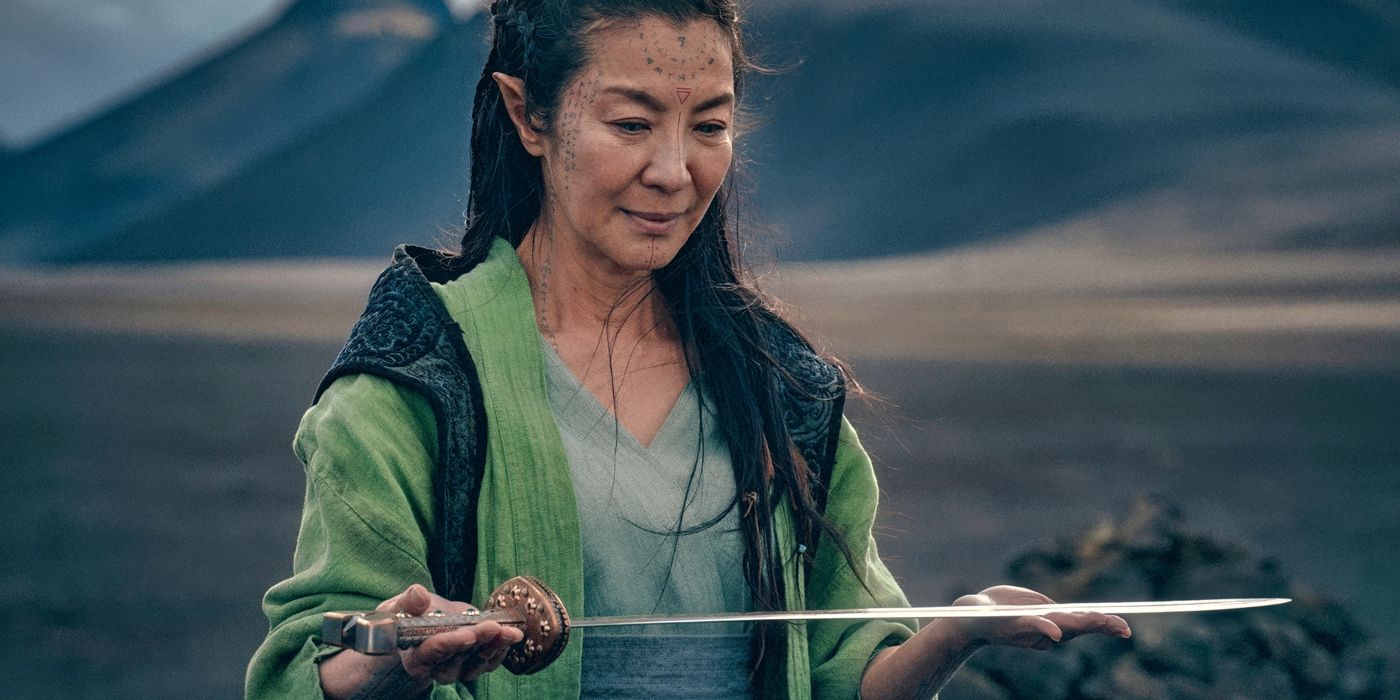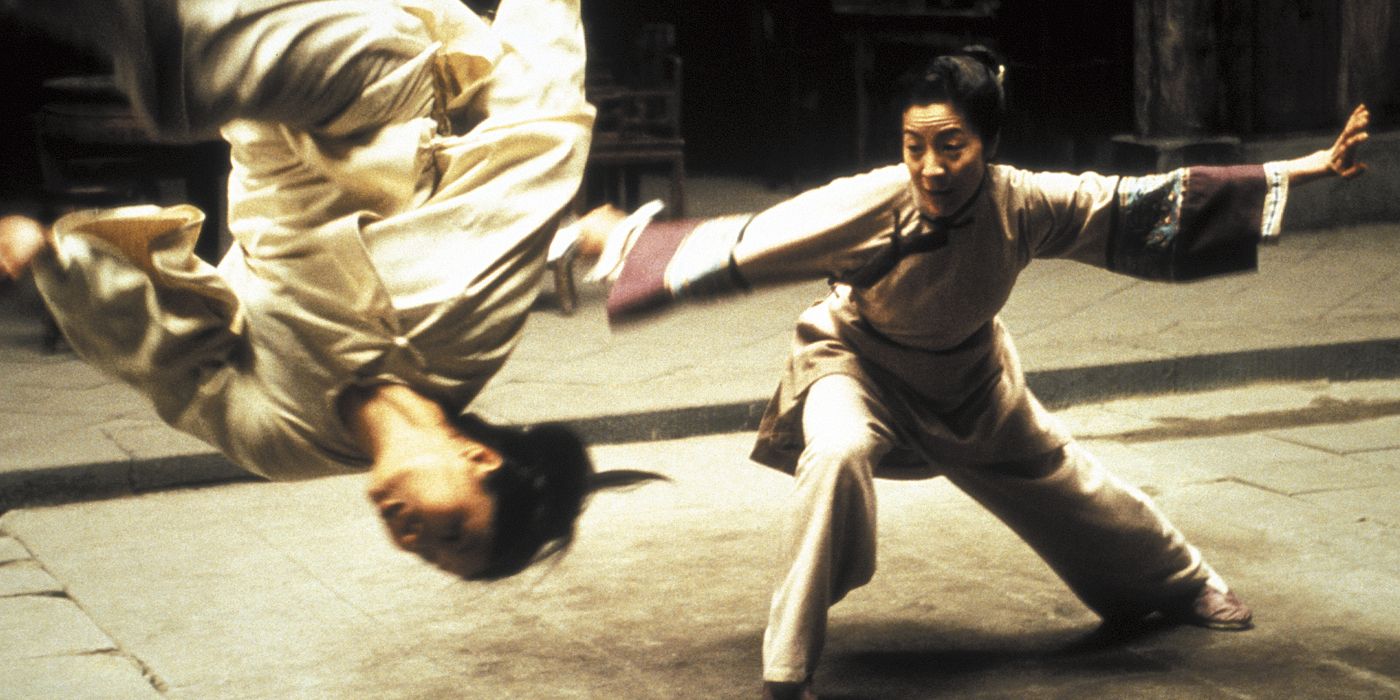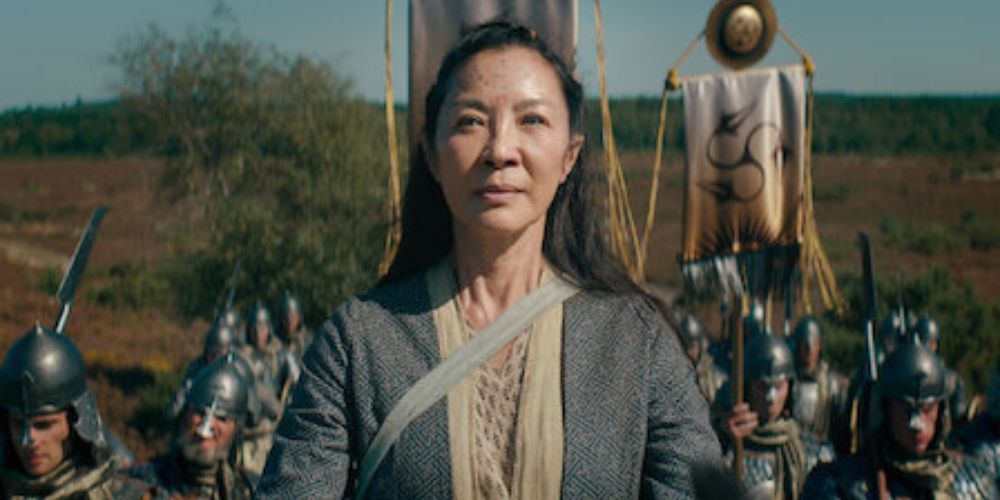Netflix's The Witcher: Blood Origin was tasked with reimagining the Continent depicted in the core series and Andrzej Sapkowski's novels. It takes place over a thousand years before the adventures of Geralt of Rivia, Yennefer of Vengerberg or Cirilla of Cintra. Unfortunately, to do that, it has fallen back on some exhausted tropes. But among the many cliches that plague the limited series, few are more harmful than the Asian stereotypes perpetuated by the character of Scian, played by actor Michelle Yeoh.
Showrunner Declan de Barra previously explained that the character presented on screen was, in fact, partly inspired by Yeoh's role in Crouching Tiger, Hidden Dragon, which itself has been criticized for perpetuating stereotypes. He told GamesRadar+, "I loved all of her Hong Kong stuff, and then I got to see Crouching Tiger, Hidden Dragon and my mouth was on the floor. Literally every action scene I write in anything, I always play the scene of her in the temple fighting beforehand."
The Witcher: Blood Origin Continues Asian Stereotypes
Crouching Tiger, Hidden Dragon continued the Hollywood tradition of including the "Dragon Lady" in some form and, after several years of at least some progress, Blood Origin appears to have brought it back to some extent. This isn't just about the abominable crime of wasting a talent like Michelle Yeoh on what critics agree is a mediocre show at best. Scian is the only character wearing garb resembling a kimono, with wide sleeves and robe-like qualities. She's the only one wielding a weapon similar to a Chinese dao and -- further separating her from the rest of the Continent's elven tribes and clans -- she's the only one of her kind. She's the only meditating, tea-drinking Asian stereotype on the Continent.
She may be the only East Asian elf, but she's not the only Asian element on the Continent. In one of the first shots of the small, dusty town of Daédwóde in The Witcher: Blood Origin Episode 2, "Of Dreams, Defiance and Desperate Deeds," audiences can see a number of buildings with East Asian architecture, which is not seen anywhere else in the series. It may have one point been included elsewhere, but audiences will never know after the show was cut from six episodes to four.
How Asian Elements Impact The Witcher: Blood Origin
Despite how quickly the location shot comes and goes, it's not as innocuous as the series thinks it is. East Asian architecture doesn't appear anywhere else in The Witcher or its other spinoffs because the main series is, like Sapkowski's novels, mainly inspired by European myths, cultures and fantasy. The reasonable conclusion any audience member would draw is that the use of East Asian architecture in The Witcher: Blood Origin is intended to make the world of elves appear exotic -- just like Asian people and cultures have often been used for "exotic" flavor in so many television shows and films. Sure, this isn't comparable to Indiana Jones and the Temple of Doom's depiction of India and Hinduism, but that doesn't mean viewers aren't seeing the same damaging mistake being made.
The point of all this isn't to say that Asian people shouldn't be a part of western fantasy projects. It's the tropes surrounding them that don't belong -- not in The Witcher universe or any television or film title. More than that, when there are Asian actors cast, their "Asianness" doesn't need to be highlighted in the way Blood Origin seems intent on doing, or in a way that turns their ethnic or cultural background into a device to build a badly written character. Michelle Yeoh could replace Henry Cavill and lead the whole Witcher franchise, but instead she's stuck in a stereotypical series.
The Witcher: Blood Origin is now streaming on Netflix.



